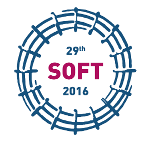Speaker
Muyi Ni
(Institute of Nuclear Energy Safety Technology)
Description
Environment assessment of large inventory tritium for fusion devices is an important issue before fusion energy commercially used. Different with other radioactive substance, tritium has particular processes of atmosphere dispersion, dry & wet deposition, oxidation in air & soil, reemission, transfer among the soil, plants, animals and human beings. In our previous work, a virtual point source method was utilized for tritium reemission modeling, coupled with dynamic method of the tritium migration in biologic chain to process the accident events.
In this contribution, we evaluated the environmental impact and determined the dose sources on the time scale after different fusion accidental release under many conditions. The proportion of intake dose through different ways in the total dose has also been calculated. Besides, according to the principle of consistency between released tritium amounts and limit dose, the maximum tritium release amount has been re-evaluated for different kinds of fusion accidents. The final discussion showed the influence of meteorological condition on the public dose under both normal and accident events. And relevant tritium emergency measures were preliminary proposed.
Co-authors
Baojie Nie
(Institute of Nuclear Energy Safety Technology, Chinese Academy of Sciences, Hefei, China)
Jieqiong Jiang
(Institute of Nuclear Energy Safety Technology, Chinese Academy of Sciences, Hefei, China)
Muyi Ni
(Institute of Nuclear Energy Safety Technology, Chinese Academy of Sciences, Hefei, China)
Shiping Wei
(Institute of Nuclear Energy Safety Technology, Chinese Academy of Sciences, Hefei, China)

